Types of Insulation: A Comprehensive Guide
Understanding the different types of insulation puts you on the road to achieving a comfortable and energy-efficient home. Insulation is designed to reduce heat transfer between a building and the environment. Insulation is measured in R-value to determine the level of thermal resistance. Aside from the R-value of insulation, other factors determine the effectiveness of insulation.

In this guide, we will discuss the common types of insulation and their R-values. We will also discuss essential factors to consider when choosing insulation.
What Are The Common Types Of Insulation?
There are different types of insulation commonly used to thermally insulate a building. These insulation differ in terms of R-value, insulating material, and installation cost. The type of insulation used in a building determines the level of thermal resistance. Here are 8 common types of insulation for homes and other building structures;

1. Spray Foam Insulation
Spray foam insulation, a product of the chemical reaction between isocyanate and polyol resin, is a popular choice for building insulation. When applied, it takes the form of a liquid and expands to approximately 30-60 times its liquid volume, effectively filling cavities and preventing air filtration or heat transfer. It is applied to different parts of a building, such as attics, roofs, walls, and floors.
Spray foam comprises 2 types depending on the cell structure, density, and R-value: Open-cell and Closed Cell Spray foam. Both types of spray foam insulation provide excellent thermal insulation in buildings. However, closed-cell is more expensive to install and offer a higher R-value than open-cell spray foam. The R-value ranges from R3 to R7, depending on the type used.
The flexibility of spray foam insulation makes it the ideal type of insulation for pipes, well-pump houses, and hard-to-reach places in a building, such as crawl spaces, rim joists, etc. Spray foam insulation is also durable and can last up to a lifetime without replacement.

2. Foam Board Insulation
Foam board insulation is an effective method to minimize heat transfer through walls, roofs, and floors in buildings. These boards, typically made from materials such as polyurethane, polystyrene, or polyisocyanurate, come in various thicknesses, generally ranging from 0.5 inches to 4 inches. The density of foam board insulation can vary, but it usually falls between 1.5 to 2.5 pounds per cubic foot.
One of the key advantages of foam board insulation is its high R-value compared to other insulation types of the same thickness. On average, foam board insulation offers an R-value ranging from R4 to R6 per inch of thickness, making it a highly efficient insulator. For instance, a 1-inch thick foam board provides an R-value of R4 to R6, whereas traditional fiberglass insulation of the same thickness might only offer an R-value of R2.2 to R3.8.
Foam board insulation is particularly suitable for applications like exterior wall sheathing and interior wall sheathing. Its use in special applications such as basement walls, foundations, and under concrete floor slabs is also common due to its moisture resistance and structural strength. The installation process of foam board insulation is relatively straightforward and cost-effective, typically costing around $0.70 to $1.20 per square foot, which makes it an economical choice compared to more labor-intensive insulation types.
In addition to its thermal insulation properties, foam board insulation also provides a degree of soundproofing, enhancing the overall comfort and energy efficiency of a building. This form of insulation is a popular choice in both residential and commercial construction projects due to its versatility, ease of installation, and high insulating value.

3. Fiberglass Insulation
Fiberglass insulation, composed primarily of fine glass fibers, is a widely used material for thermal insulation, representing about 80-90% of the residential insulation market. Its popularity stems from its cost-effectiveness and excellent thermal resistance properties. Typically, fiberglass insulation costs approximately $0.30 to $1.00 per square foot, making it one of the most affordable insulation options available.
This type of insulation is particularly favored for its ease of installation, especially in DIY projects. Fiberglass insulation comes in various forms, including rolls and batts, which are ideal for standard spacing in walls, attics, and roofs. These rolls and batts typically come in thicknesses ranging from 3.5 inches for wall cavities to up to 12 inches for attic spaces. Additionally, fiberglass can also be used as loose-fill insulation, a form that is blown into spaces, making it suitable for irregularly shaped areas and around obstructions.
The effectiveness of fiberglass insulation is measured by its R-value, indicating its resistance to heat flow. On average, fiberglass insulation provides an R-value between R2 and R3 per inch of thickness. For example, a standard 3.5-inch wall batt of fiberglass insulation would have an R-value of about R11 to R15, while a 12-inch thick layer in an attic could reach R38 to R49.
Despite its affordability and ease of use, fiberglass insulation requires careful handling due to its composition of small glass fibers, which can irritate the skin and respiratory system. It is recommended to use protective gear, such as gloves, long sleeves, and a mask, when installing fiberglass insulation.
Overall, fiberglass insulation is a practical and cost-effective solution for enhancing the energy efficiency of homes and buildings. Its widespread use is attributed to its versatility, being suitable for various applications, and its ability to significantly reduce energy costs by improving thermal performance.

4. Loose-Fill Insulation
The overall R-value achieved with loose-fill insulation can vary based on the depth and density of the material applied. For example, a standard application in an attic might involve blowing in 10 to 14 inches of cellulose, achieving an R-value of approximately R38 to R53, or fiberglass at a similar depth, which would result in an R-value of around R22 to R37.7.
The installation cost of loose-fill insulation is somewhat higher than other forms due to the necessity of specialized blowing equipment. On average, the cost of installing loose-fill insulation ranges from $1 to $1.50 per square foot, depending on the material used and the complexity of the space being insulated. This cost includes both the material and labor, with labor costs being higher due to the specialized skills and equipment needed.
Loose-fill insulation is an ideal choice for retrofitting existing structures where it might be challenging to install other forms of insulation without significant disruption. It's also a popular choice in new construction due to its effectiveness in providing complete coverage and filling in around obstructions, such as pipes and wiring, ensuring a more uniform thermal barrier.
In addition to its thermal insulation properties, loose-fill insulation can also contribute to soundproofing, reducing the transmission of noise between rooms and from the outside. This makes it a versatile solution for improving the comfort and energy efficiency of both residential and commercial buildings.

5. Blanket or Batt Insulation
Batt or blanket insulation is a common type of insulation that comes in rolls and batts. The materials used for fiberglass insulation are made from fiberglass, cellulose, mineral wool, natural fibers, or plastic. They are easily mounted into wall studs, rafter joists, and floor joists. It is also a cheap type of insulation to install.
In terms of thermal resistance, batt insulation typically offers an R-value ranging from R3 to R4 per inch of thickness. This means that a standard 3.5-inch thick batt, commonly used in wall cavities, would have an R-value of about R11.5 to R14. For greater insulation needs, such as in attics, batts can be as thick as 10 to 14 inches, providing an R-value between R30 and R56.
Batt insulation is available in a variety of sizes to match common spacing of wall studs and floor joists, usually in widths of 16 inches or 24 inches. The lengths can vary, with standard rolls ranging from 20 to 40 feet, allowing for coverage of large areas with fewer seams. This versatility in sizing makes batt insulation suitable for a wide range of applications, from small residential projects to large commercial buildings.
The installation process of batt insulation is straightforward and cost-effective. A typical installation cost ranges from $0.60 to $1.20 per square foot, depending on the type of material and the complexity of the installation. To install, one simply needs to cut the blanket to size and fit it snugly between the studs or joists. This ease of installation, combined with its affordability, makes batt insulation a popular choice for DIY enthusiasts and professional contractors alike.
Overall, batt insulation provides an efficient and economical way to enhance the energy efficiency of a building. Its wide range of material options and flexibility in sizing make it adaptable to various building designs and insulation requirements.

6. Cellulose Insulation
Cellulose insulation, a sustainable and eco-friendly option, is primarily made from recycled paper products, typically comprising about 80-85% recycled content. To enhance its safety and functionality, the material is treated with fire retardants like boric acid or ammonium sulfate, which make up approximately 15-20% of its composition. This treatment not only helps in preventing fire hazards but also deters pest infestations.
This type of insulation is commonly applied using a blowing machine, which allows for its distribution into various areas of a building, such as open walls and attics. In attics, the recommended depth for blown-in cellulose insulation ranges from 8 to 12 inches, achieving an overall R-value of R24 to R45.6. For open walls, cellulose is often blown in to achieve a density of about 3.5 pounds per cubic foot, which helps in preventing settling over time and maintains its insulating properties.
Additionally, cellulose can be dense-packed into wall cavities, a technique that involves blowing the material under higher pressure to achieve a density of approximately 3.7 to 4.0 pounds per cubic foot. This method is particularly effective for retrofitting existing walls, as it can be done with minimal disturbance to the wall finishes.
The R-value of cellulose insulation typically ranges from R3 to R3.8 per inch of thickness. For example, a standard 2x4 inch wall cavity filled with cellulose insulation (about 3.5 inches deep) would have an R-value of approximately R13 to R13.3. This high R-value per inch makes cellulose an efficient insulator, especially in limited space scenarios.
The cost of installing cellulose insulation varies but is generally competitive with other forms of insulation. On average, the installation cost ranges from $1 to $1.50 per square foot, including both material and labor. This cost-effectiveness, combined with its environmental benefits and high R-value, makes cellulose insulation a popular choice for both new construction and retrofit applications.
In summary, cellulose insulation offers a blend of energy efficiency, environmental sustainability, and cost-effectiveness. Its versatility in application, whether blown-in or dense-packed, makes it suitable for a wide range of building types and insulation needs.

7. Reflective Insulation
Reflective insulation, utilizing materials such as aluminum foil, is designed to resist the transfer of radiant energy in buildings. This type of insulation primarily addresses radiant heat transfer, which is distinct from the convective and conductive heat flow typically targeted by other insulation types like fiberglass or cellulose.
To maximize its effectiveness, reflective insulation often involves the installation of multiple layers of reflective foil. Each layer of foil reflects radiant heat, reducing the amount of heat that passes through the insulation. For example, a single-layer reflective insulation might have an R-value around R1 to R2, but when two layers of foil are used, the R-value can increase to R5. The effectiveness of reflective insulation is enhanced further with each additional layer of foil.
The R-value increase is generally in direct proportion to the number of layers of foil used. For instance, a three-layer reflective insulation system might achieve an R-value as high as R7.5. However, the effectiveness of reflective insulation also depends on other factors, such as the presence of an air gap between the layers, which can enhance its thermal resistance properties.
Reflective insulation is particularly effective in hot climates where radiant heat transfer is a significant concern. It is often used in attics, where it can reflect the sun's heat away from the living spaces below. The cost of reflective insulation varies, but it is generally more affordable than other high R-value insulation types. Installation costs range from $0.50 to $1.50 per square foot, depending on the number of layers and the complexity of the installation.
While reflective insulation can be used independently, it is most effective when combined with other types of insulation, such as fiberglass or foam board. This combination helps in addressing all forms of heat transfer - radiant, conductive, and convective - thereby enhancing the overall thermal efficiency of a building.
In summary, reflective insulation offers a unique solution to reducing radiant heat transfer in buildings. Its effectiveness, affordability, and ease of installation make it a suitable option for improving energy efficiency, especially in climates with significant exposure to solar radiation.

8. Radiant Barrier Insulation
Radiant barrier insulation comprises thin sheets or layers, often made of aluminum foil, that are installed in homes to combat radiant heat transfer. Functionally similar to reflective insulation, radiant barriers work primarily by reflecting radiant energy, thereby reducing the amount of heat that penetrates a building's interior. This type of insulation is particularly effective in hot climates, where it helps keep indoor spaces cooler by reflecting the sun's heat away.
The R-value of radiant barrier insulation is relatively low, typically around R2, which is less than what is offered by more traditional insulation materials like fiberglass or cellulose. However, the strength of a radiant barrier lies in its highly reflective surface. This reflective capability is measured by emissivity, and most radiant barriers have an emissivity value of 0.05 or less, meaning they can reflect 95% or more of the radiant heat.
Radiant barriers are most commonly installed in attics, where they can be laid over existing insulation or attached to the underside of the roof. This placement is strategic, as attics are often the primary source of heat gain in a house, especially in regions with high temperatures and strong sun exposure. The installation process is relatively straightforward and can be a cost-effective addition to traditional insulation. The cost for installing radiant barriers varies but is generally in the range of $0.15 to $0.30 per square foot, making it a budget-friendly option for reducing heat gain.
While radiant barriers alone are not sufficient to insulate a building fully, they significantly enhance the performance of other insulation types. When combined with conventional insulation materials, they provide a comprehensive solution to managing a building's thermal environment, addressing both radiant and conductive heat flow.
In summary, radiant barrier insulation is a specialized solution for reducing radiant heat transfer in buildings. It's particularly beneficial in hot climates, where its ability to reflect radiant heat can lead to noticeable improvements in indoor comfort and reductions in cooling costs.
What Are The Factors When Choosing Insulation?
Several factors must be considered when comparing insulation for your home. Here are 10 factors that you must consider before choosing insulation for your building.
- Thermal Resistance (R-Value):
The thermal resistance of an insulation, which is also known as its R-value, is a measure of the material’s ability to resist heat transfer. R-value varies for different types of insulation. The higher the value, the higher the thermal resistance. Closed spray foam insulation offers the highest R-value, while fiberglass insulation offers the lowest.
- Climate And Location:
The climate and location of a building play vital factors when choosing insulation. Buildings in cold climates require a high R-value, such as spray foam insulation, to retain heat. For hot climates, reflective or radiant insulation is a suitable option.
- Application and Space:
The area of application is important when selecting insulation. Virtually all types of insulation can be used for wall insulation, attic insulation, and floor insulation. However, not all types of insulation can be used for crevices, pipes, or hard-to-reach places such as crawl spaces. Spray foam insulation is a versatile type of insulation that is applied to irregular spaces.
- Cost and Budget:
Installation cost is a major criterion to consider when choosing the type of insulation to use for your building. Evaluate your budget and cost before choosing an insulation. The installation cost varies with different insulating materials. Spray foam insulation is considered the most expensive, while fiberglass insulation is the cheapest. Here is a breakdown of how much spray foam insulation costs.
- Environmental Impact:
It is essential to consider the environmental impact of an insulating material when selecting insulation. Choose insulating materials that are eco-friendly and sustainable. This helps to create a healthier environment and reduce carbon footprint. Get this high-quality carbon-neutral spray foam product from Kraken.
- Ease of Installation:
Ease of installation can affect insulation selection. Fiberglass, Reflective, and foam board insulations are all DIY-friendly. In contrast, spray foam and loose-fill insulation require the services of a professional for efficient installation.
- Fire Resistance:
The flammability of insulating material is an essential factor to consider when choosing insulation. The insulation should be able to resist fire to a certain degree. Cellulose insulation minimizes fire since they are usually treated with retardants.
Fiberglass and mineral wool also possess fire-resistance capabilities. Typically, foam insulation supports combustion because of its chemical constituents. However, newly improved spray foam products such as Fast Coat have a Class 1 fire rating.
- Moisture Resistance:
Moisture accumulation causes gradual deterioration of insulation. Therefore, the ability of insulating material to resist moisture is an essential characteristic to consider before choosing an insulation. Moisture resistance eliminates the risk of mold growth in buildings. Spray foam insulation provides superior moisture resistance. On the other hand, fiberglass insulation absorbs moisture easily.
- Soundproofing
Insulation is a good way to soundproof your building especially if you are in a noisy environment. However, not all types of insulation provide soundproofing capabilities. Soundproofing a building makes it more relaxing and distraction-free for occupants. Spray foam and fiberglass insulation are effective at dampening sound transmission.
- Building Codes and Regulations
Local building codes and regulations may dictate specific insulation for different parts of a building. Ensure that the chosen insulation meets these building codes to avoid penalties.
FAQs
What Type of Insulation For Attics?
Spray foam insulation offers a high R-value, and it is the most suitable type of insulation for attics. Cellulose and fiberglass insulation are also suitable types of attic insulation that can effectively provide thermal resistance.
What Type of Insulation For Crawl Space?
The best type of insulation for crawl space is spray foam. They are suitable for irregular spaces and provide effective moisture resistance.
What Type of Insulation For Interior Walls?
Batts and spray foam are the ideal types of insulation for interior walls. They possess soundproofing capabilities, thermal resistance, environmentally-friendly, and fire resistance. Reflective insulation can also be used in combination with other types of insulation to provide thermal resistance in a living space.
What Type of Insulation For Exterior Walls?
Foam Board is the most suitable type of insulation for exterior walls. They are commonly used for exterior wall sheathing and interior sheathing for basement walls.
What Type of Insulation For Basement Walls?
Spray and foam board are suitable types of insulation for basement walls. They provide effective moisture and thermal resistance, thereby creating a comfortable and energy-efficient basement environment.
What Type of Insulation For Ceiling?
Spray foam, batts, and cellulose are types of insulation for ceilings. However, spray foam insulation is the ideal type of insulation as it can applied to irregular ceiling shapes and provides a higher thermal resistance.
What Type of Insulation For Garage?
The best type of insulation for a garage is spray foam. Spray foam offers a high R-value, moisture resistance, soundproofing capabilities, and durability.
Author : Krakenbond Team


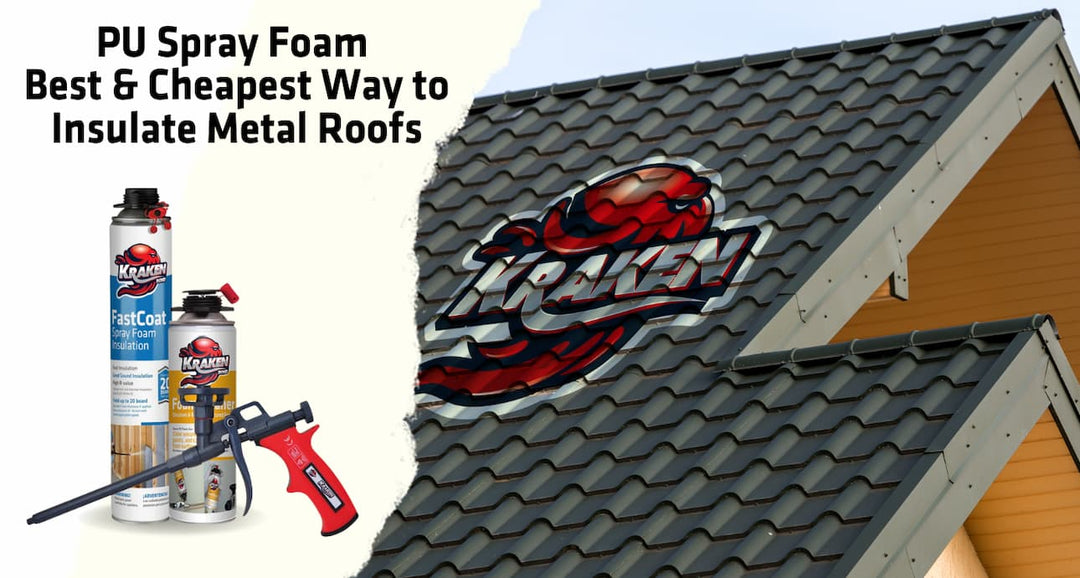
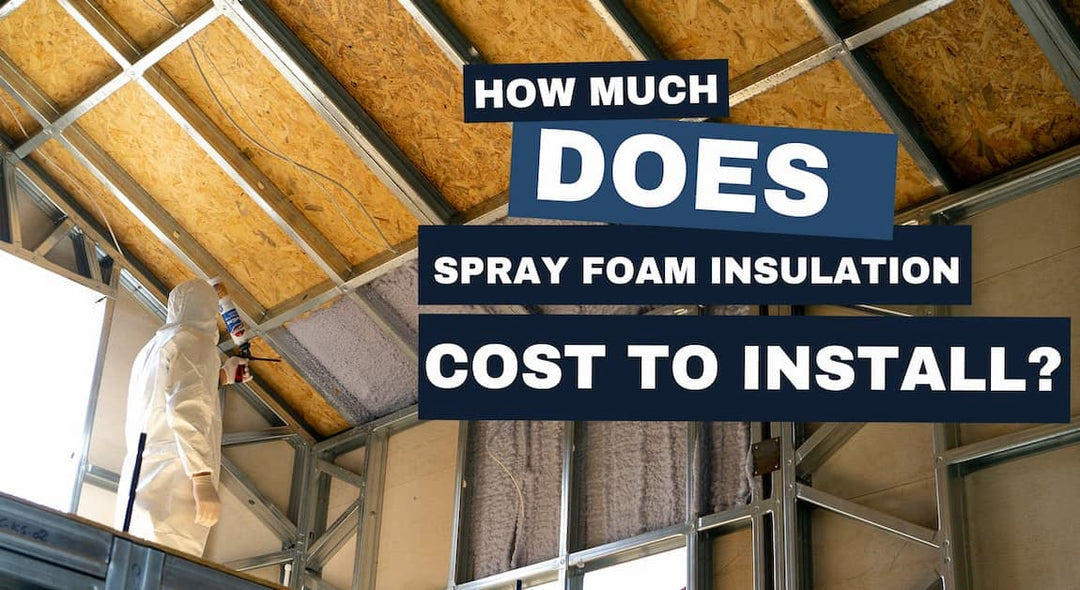
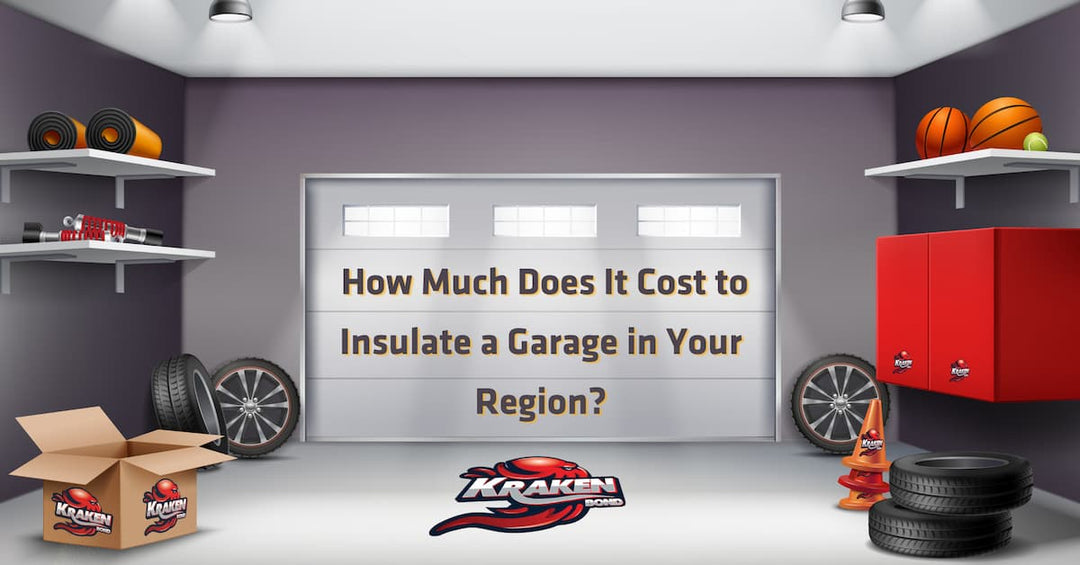
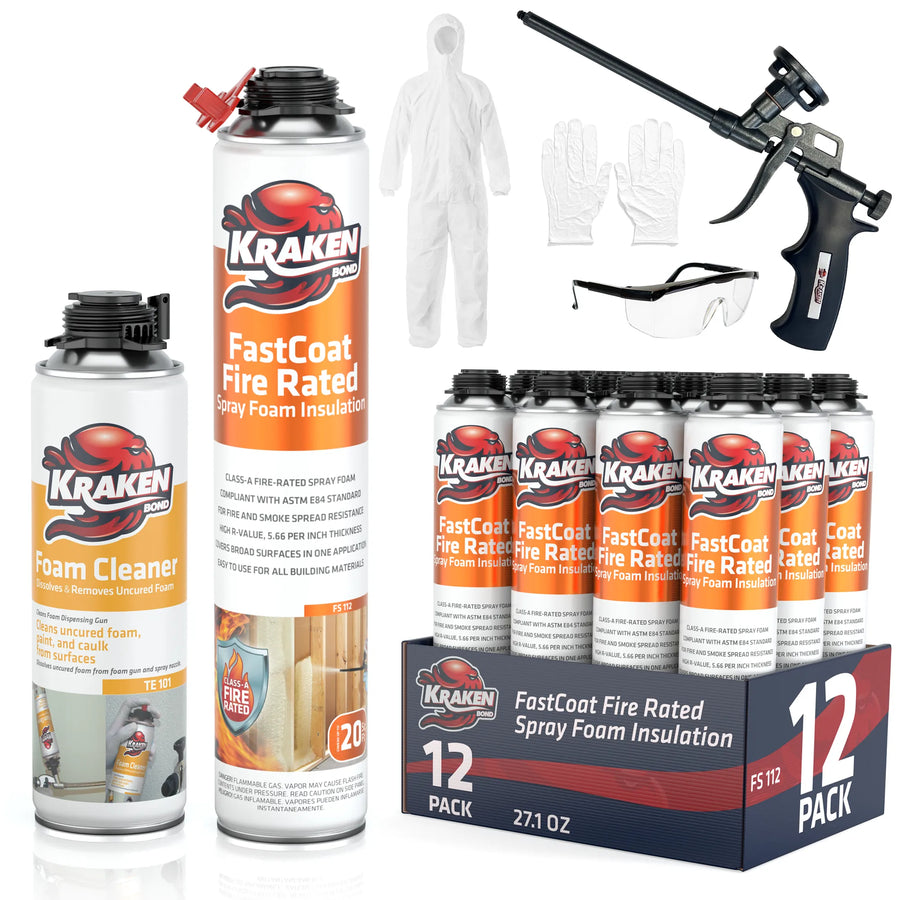







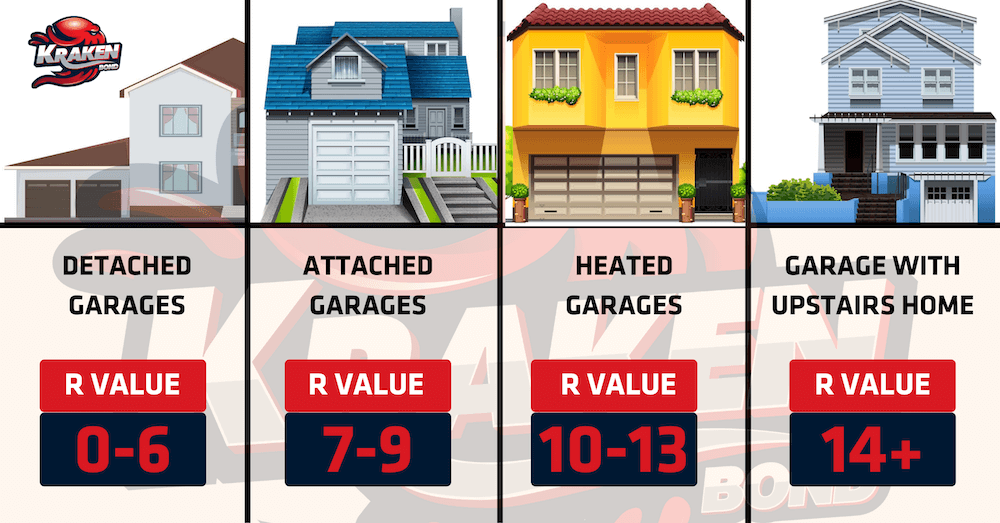
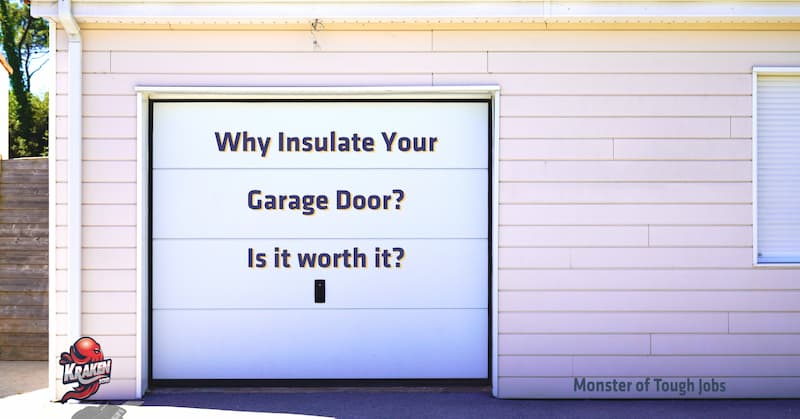
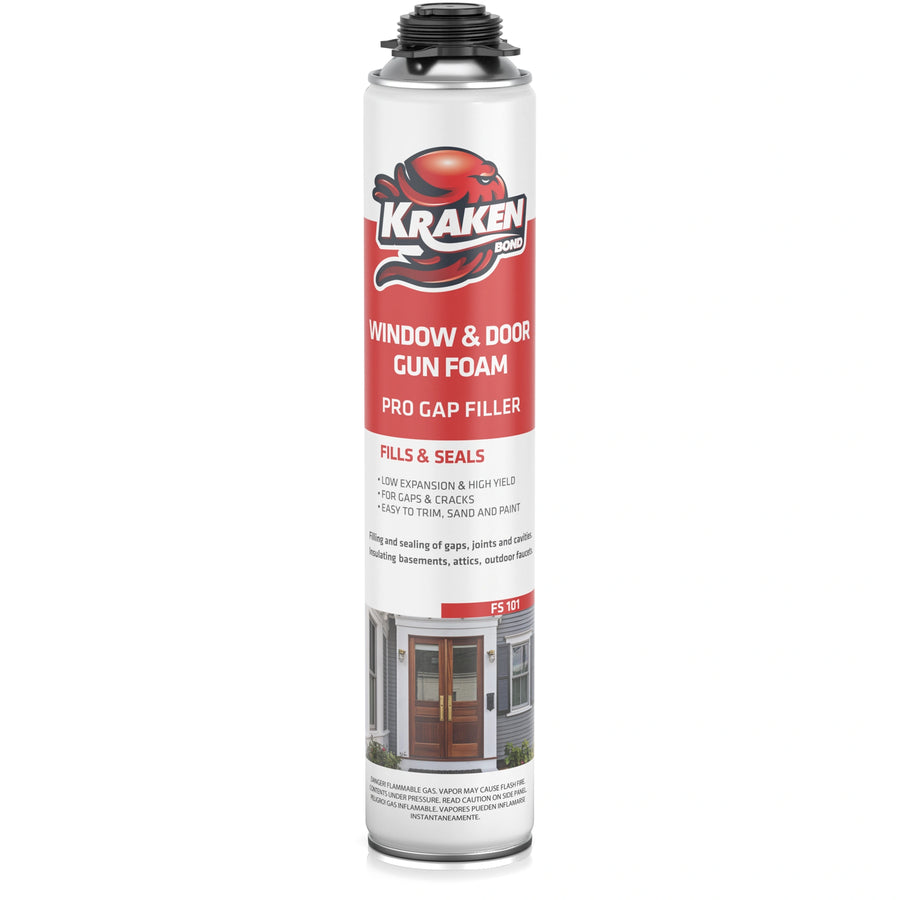
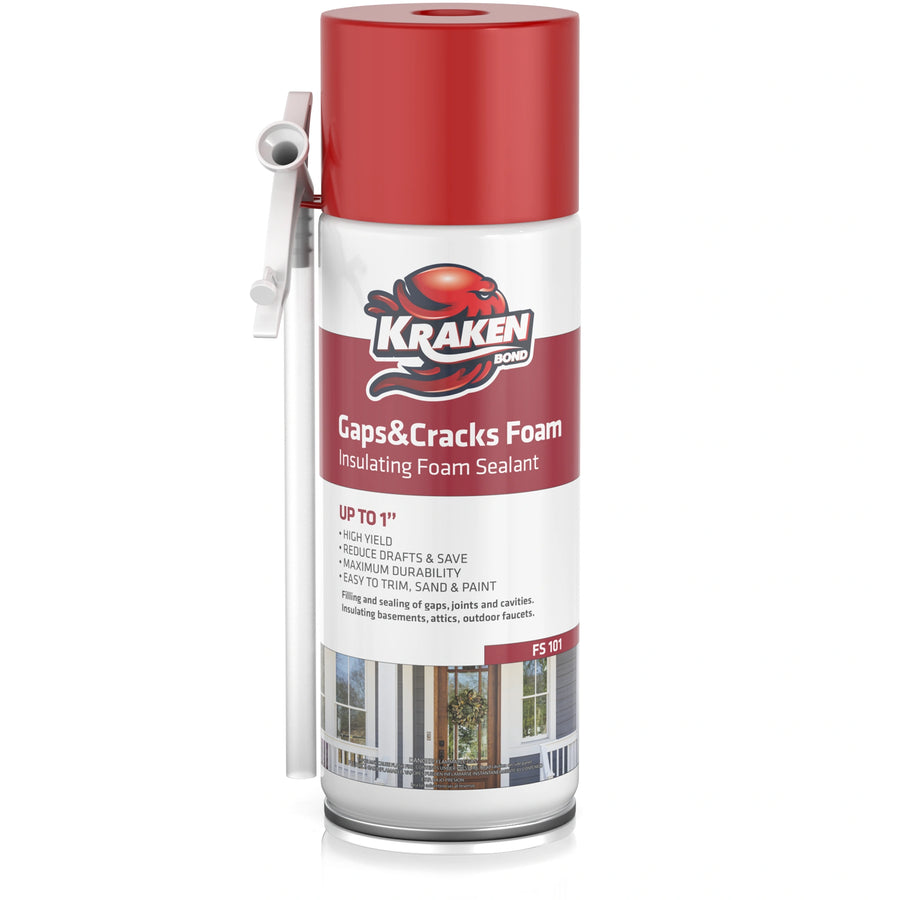
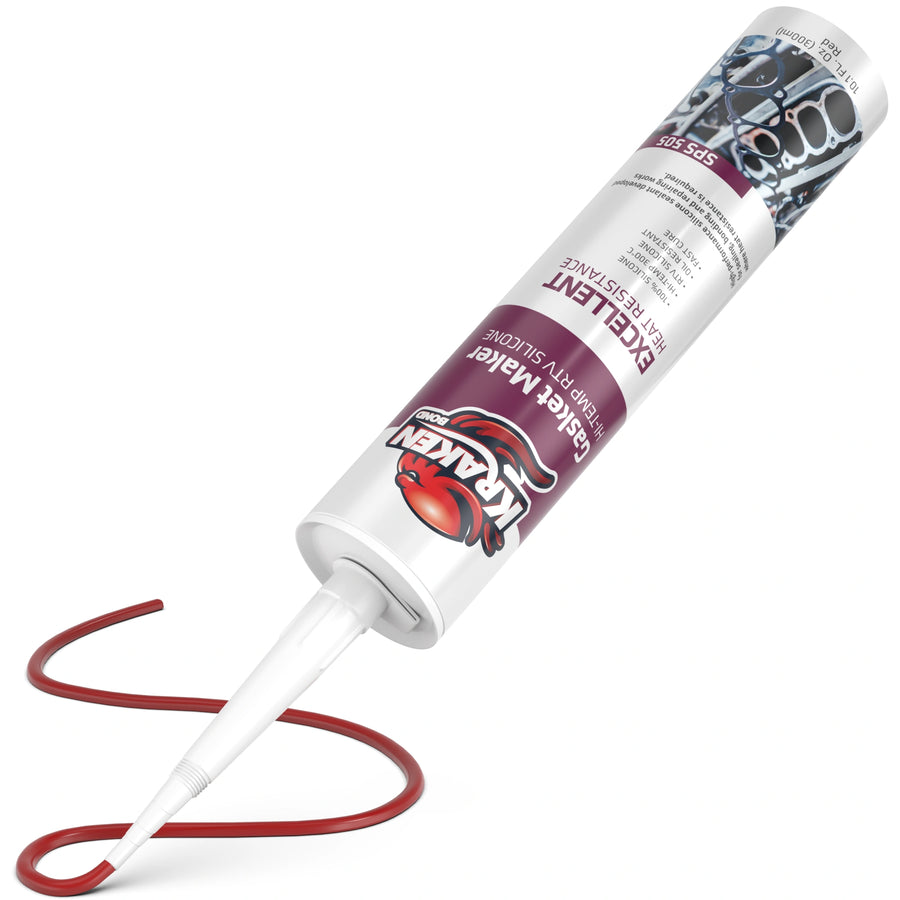
Leave a comment